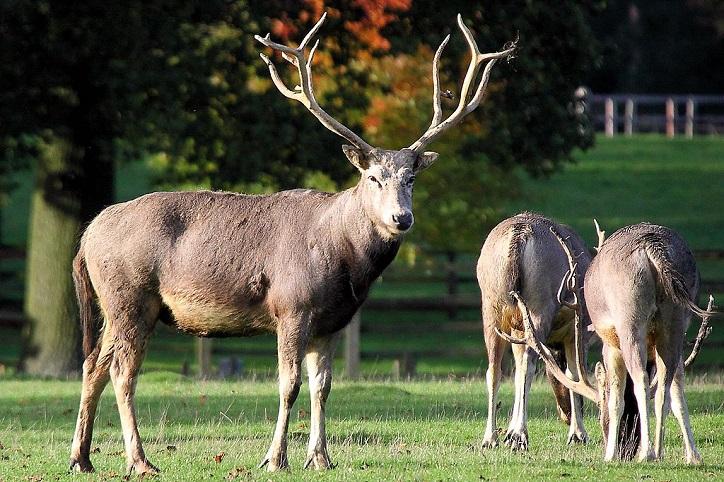China Biodiversity: Over 460 newborn Milu Deer born in Hubei
Milu deer (Elaphurus davidianus) is listed as Class I National Key Protected Species of China. The species is Classified as Extinct in the Wild by the IUCN’s Red List. It is said to have became extinct a long time ago, perhaps 1800 years ago, and was for a long time preserved by the Chinese Emperor in his Imperial Hunting Park not far from Beijing.
Before the wild population of Milu deer became extinct in China, captive populations were established overseas, which formed the basis for a reintroduction to China in 1985.
Ex-situ conservation is an important part of the Convention on Biological Diversity, one of the objectives of the “Aichi Biodiversity Targets” and a strategic task and priority action of the China Biodiversity Conservation Strategy and Action Plan (2011‒2030). Since reintroduction, the native population has become established and has expanded. The starting point for the reintroduction process was Beijing Milu Park, where 38 deer were reintroduced in 1985. After successful expansion of the population, the Beijing Milu Park began to send deer to other parts of the country.
More than 460 milu deer were born this year in Shishou Milu Deer National Nature Reserve in China’s central Hubei Province. These baby milu deers are in good health, with the total number in the reserve at almost 2,000. Endemic to China, the milu deer are nicknamed “sibuxiang,” or “animal like none of the four,” as they have a horse-like face, a donkey-like tail, cow-like hooves, and stag-like antlers. They inhabit marshland and feed on tender grass.
Sources:
- CGTN Global Watch, @cgtnglobalwatch, Jul 19, 2023. https://youtu.be/MYRKlWL4wno
- Biodiversity Science, Chinese Academy of Science, 2021. 10.17520/biods.2021018
